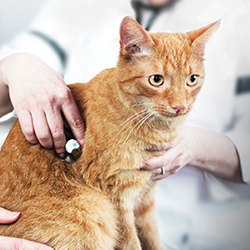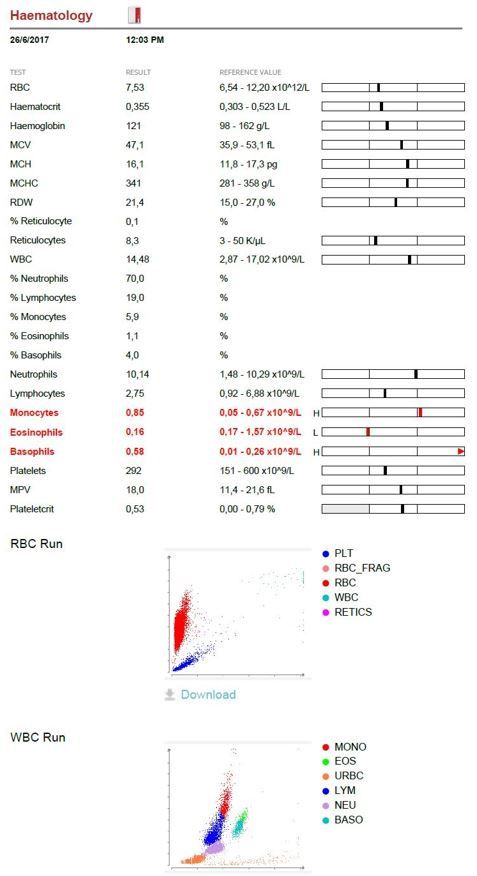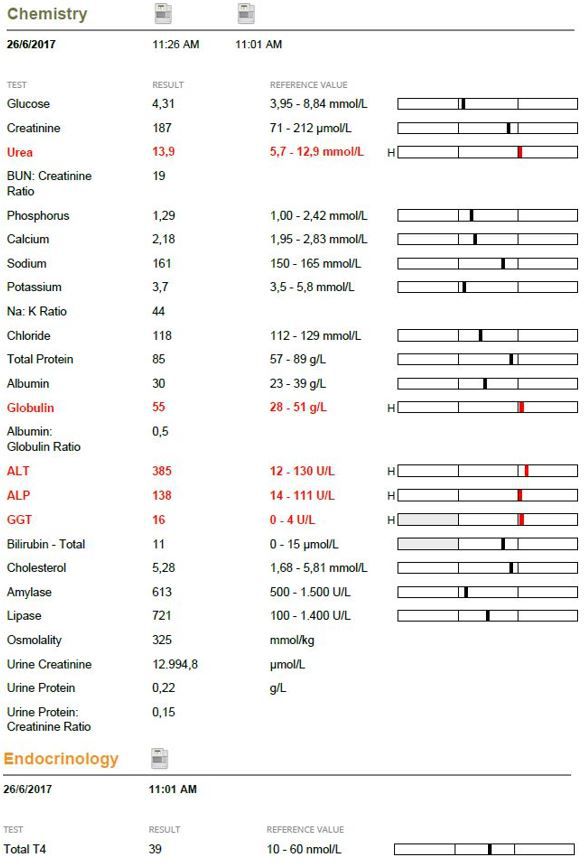Minimum DataBase
Minimum DataBase and pre-anesthetic case study
Courtesy of Niels Henrik Lund, Anicura Familiedyrlægerne, Aalborg

Background information
Name: Aphrodite
Age: 16 years
Breed: Domestic shorthair
Gender: Female neutered
Presenting reason
Aphrodite was presented in the clinic because of anorexia, retching or vomiting (owner not sure) and attempt to cough.
History
Acute onset of symptoms 3 days back. The owner observed her eat a bird 4 days ago and is concerned about a potential foreign body, otherwise no history of disease. Indoor-outdoor cat.
Vaccination status not up to date, as a matter of fact Aphrodite had not seen a vet for 5 years. Aphrodite lives in a part of Scandinavia where certain types of grass can get caught in the soft palate/laryngeal area.
Physical examination
Bright, alert and responsive. Slightly stressed and a low BCS (3/9) and a mild murmur is observed at auscultation, also mild tachycardia.
Diagnostic plan
As the primary problem was either GI or upper airway related, it was decided to anaesthesize Aphrodite for airway examination and imaging of thorax and abdomen. As she is an old cat, it is decided to run a pre-anesthetic screening profile consisting of a complete MDB rather than a smaller pre-an screening. The MDB consists of CBC, chemistry including electrolytes and urinalysis. TT4 is added to the screening due to the age of the cat and the physical presentation. SNAP ProBNP is also considered to rule out cardiac disease but not performed at the initial work up.
Diagnostic review
Mild monocytosis and very mild left shift with a neutrophil count in the high end indicating mild inflammation.
Elevated liver enzymes, both hepatocellular and cholestatic and a creatinine that is in the high end of the normal range. A mildly elevated urea in a cat that has not eaten for days is also concerning. As the patient is scrawny, it is decided to add SDMA to the panel for a more reliable picture of the GFR. SDMA is 16
Specific gravity measured in-clinic was 1.020 and sediment inactive. Due to diluted urine and suspicion of early renal disease, a urine creatinine-protein ratio was run showing a value of 0.15
It is however decided that it is safe to put the patient under general anesthesia.
Next steps
During examination, a piece of grass was found and removed. Due to elevated liver enzymes, a fine needle aspirate of the liver was obtained and showed signs of hepatic lipidosis. This lead to a decision to hospitalize the cat for a further 2 days to ensure immediate food intake to avoid further complications following the hepatic lipidosis. She luckily started eating herself already the next day and was discharged from hospital.
As Aphrodite also had a slightly elevated SDMA it was agreed to have her back at the clinic for a monitoring after 4 weeks. At this stage the work-up showed a SDMA of 24 and a creatinine that had increased from 187 to 204 putting categorizing her as an IRIS stage 2.
Outcome
Aphrodite was managed as a CKD patient and lived for another 18 months on renal diet.
Comments
This is a case showing that pre-anesthetic screening in an older patient can bring great value. Not only to determine whether it is safe to anesthesize the patient but also as it can uncover subclinical disease and running a full MDB in this case gave a better overview of the patient’s health status. In this case, it uncovered renal disease and the signs of hepatic lipidosis helped the clinic to adopt their in-clinic care for the cat as prolonged anorexia could have had very serious consequences in a patient like this.
Patient reports
Haematology

Chemistry

